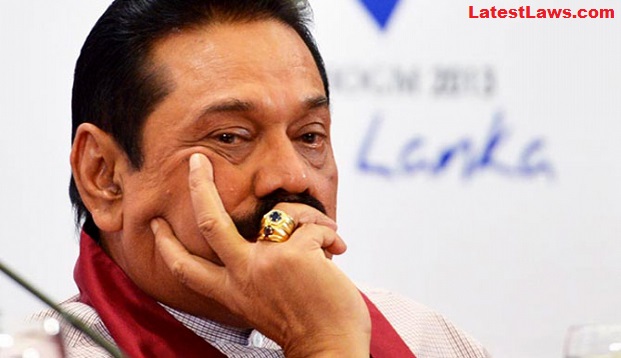December 15, 2018:
On Saturday, Mahinda Rajapaksa, who was appointed as Sri Lanka’s Prime Minister by President Maithripala Sirisena in a controversial move, resigned as two crucial Supreme Court decisions made the embattled former strongman’s efforts to cling to premiership untenable.
Rajapaksa informed the lawmakers of United People’s Freedom Alliance (UPFA) that he has resigned from the post, MP Shehan Semasinghe told reporters.
His son, Namal Rajapaksa, had yesterday said he will quit “to ensure stability of the nation”, after the Supreme Court ordered that he should not exercise the powers of the office he has claimed since Oct 26.
The apex court’s latest ruling came a day after it unanimously declared that the dissolution of Parliament by President Maithripala Sirisena was “illegal”, in a body blow to the embattled leader, whose controversial decisions plunged the island nation into an unprecedented political turmoil.
Namal Rajapakse said they will join a coalition with President Maithripala Sirisena who triggered the political crisis on Oct 26 by sacking PM Ranil Wickremesinghe and replacing him with former foe Rajapakse.
The latest decision of Rajapakse to back down came as the SC ruled that he and his purported cabinet should not exercise the powers of the office they claim until he could prove his legitimacy.
The court ruling also meant that the country was effectively without a Govt. and heading for a shut down in the absence of parliament voting for a budget for 2019.
In another blow to Sirisena, the highest court ruled on Thursday that his sacking of parliament on November 9 was illegal and cancelled a snap election he had called for Jan 5.
Rajapakse failed to prove his majority in parliament and was twice defeated in no-confidence motions on November 14 and 16, but refused to step down.
Wickremesinghe also refused to step down since Oct 26 maintaining that his sacking was illegal. That issue is currently being canvassed before courts.
Political sources said Sirisena was likely to invite Wickremesinghe to form a new government over the weekend and end the power vacuum.
Rajapaksa was appointed as the prime minister on Oct 26 by President Sirisena in a controversial move after sacking Ranil Wickremesinghe, which plunged the country into an unprecedented constitutional crisis.
Pro-Rajapaksa lawmaker, Lakshman Yapa Abeywardena, had told reporters that Rajapaksa decided in a meeting on Friday with President Sirisena to resign to allow the President to appoint a new government.
Wickremesinghe is expected to take oath as Sri Lanka’s PM on Sunday.
President Maithripala Sirisena has reportedly agreed to reinstate ousted Prime Minister Wickremesinghe in the post after a discussion with him over the phone on Friday.
Source Link
Picture Source :

























